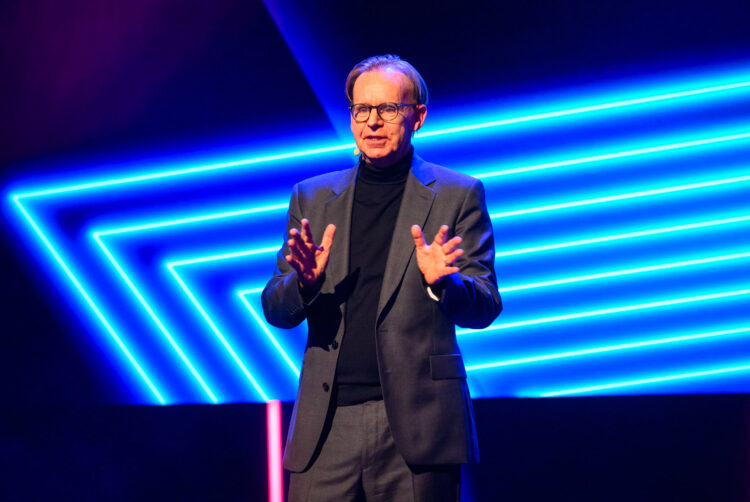ITVX’s content strategy: Hero genres, higher volume and catching the long tail

“With ITVX as the foundation, we have a really solid base for future growth.”
Dame Carolyn McCall, ITV’s CEO, expressed pride in the growth of the broadcaster’s streaming service as it approaches its second anniversary this month.
ITV said that ITVX has outpaced all other major streaming platforms in terms of viewer hour growth in the UK since it launched in December 2022.
Total viewing hours have risen 35% in those two years, ahead of BBC iPlayer, Netflix, Disney+, Channel 4 and Amazon Prime Video.
Meanwhile, monthly active users (+37%) and total digital revenue (+39%) have also grown considerably since launch.
On an investor webcast attended by The Media Leader titled “A Spotlight on ITVX: Transforming the Viewer Experience”, managing director Kevin Lygo declared ITVX “the fastest-growing streaming platform in the UK”.
When asked whether ITV would consider increasing ad loads on the platform to maintain revenue growth, Lygo said that “we do really put the viewer first”, adding: “It’s very important that the ad loads are the right amount. At this stage, we control that quite closely.”
The webcast comes in lieu of an official upfronts; ITV elected not to host its annual Palooza this year amid headwinds facing the TV advertising market.
ITV reported in November that it expects total ad revenue to fall by up to 7% this quarter (although it still anticipates ad revenue growth of 2.5% for the year). Digital ad revenue was a sign of strength, however, growing 15% over the first nine months of the year. ITVX, meanwhile, saw a 15% increase in total viewing hours to 1.1bn during the time frame.
But a lacklustre business performance, particularly among its Studios segment (revenue declined 20% in the first nine months of the year), has sparked rumours that McCall would consider a sale, such as by spinning off the production division.
On the webcast, Lygo added that while “of course there’s linear decline; that’s why ITVX is there and growing well”, he stressed that ITV would not take its foot “off the gas” with its linear proposition either.
He further explained that the 25-54 demographic presents “the biggest growth opportunity” for ITVX going forward, given this cohort “increasingly [turns] to streaming first” and this group’s content preferences over-index in ITV strengths such as reality TV, sport, drama and entertainment.
More than half (56%) of ITVX’s audience are in the under-55 demographic, compared with one-third (33%) of total TV audiences.
Five-pronged content strategy
ITV media and entertainment content director Rosemary Newell said the broadcaster’s content strategy had “evolved significantly” over the last two years to reimagine ITVX from a catch-up service to a fully fledged entertainment platform.
Apart from adding 10,000 hours of free content to ITVX since launch, Newell outlined a five-pronged content strategy aimed at attracting new users, but also retaining them once they’ve finished watching their desired programme.
It includes a focus on “fireworks” — or content in the “hero genres” of drama, reality, sport and entertainment designed to drive viewing. Newell said ITV has “adapted the way this high-profile content is delivered to viewers”, such as by creating “a single powerful content moment” around its shows.
AI disruption coming to TV makes ITV sale even more important
Secondly, to grow retention and increase continued engagement, Newell described the importance of “always hav[ing] a new title on the horizon” for viewers once they finish watching tentpole shows, such as the highly successful Mr Bates vs The Post Office.
Part of this strategy is windowing content releases or promoting additional programmes amid high-engagement periods, such as around the Euros. These could include what Newell referred to as “bonfires” — or ITV’s catalogue of boxsets and films that provide a “long tail of viewing”.
In addition, ITV considers its free ad-supported TV (FAST) channels as a way to encourage additive viewing and Newell said the broadcaster has “rebalanced” its FAST offering to better cater to the 25- to 54-year-old segment.
She noted that ITV’s 12 FAST channels offer 62% more streaming hours today than the year before.
Newell added that ITV is employing a test-and-learn strategy for providing news content via streaming through ITVX News and has also been piloting live sport on the service.
Leaning in to short-form video for marketing
Jane Stiller, ITV’s chief viewer officer, noted that ITV had increased its marketing efforts this year to promote ITVX as a front-of-mind streaming destination.
The bigger investment has in part gone to “reactive marketing”, with the goal of driving incremental viewing, such as capitalising on actor Barry Keoghan getting buzz for his performance in Saltburn by promoting shows he featured in earlier in his career, such as Love/Hate.
“Talkability is a key part of our strategy,” explained Stiller, adding that ITV now works with 120 UK influencers to drive engagement and link short- and long-form video consumption.
She added that short-form video “can be a real lever of growth for us as well.”
Are AI ads the future of TV? With ITV’s Jason Spencer and Alan Hall




